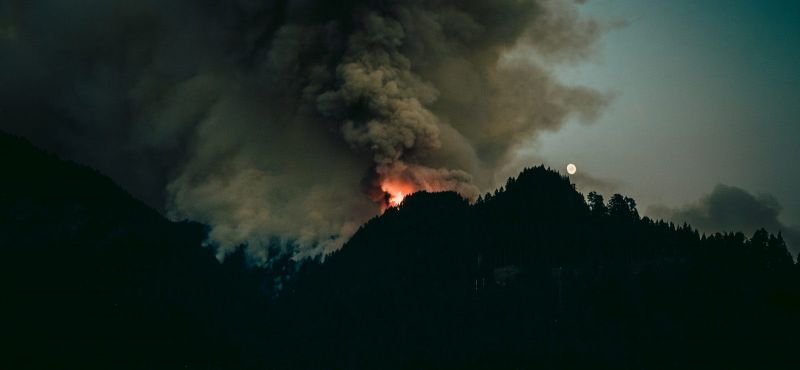
As wildfires become increasingly larger and more common, researchers are working to learn about and respond to wildfires more effectively.
In recent years, disaster responders have reported unprecedented fire behavior, with wildfire moving at speeds and in ways people have never seen before. In 2018, 8,527 fires burned an area of nearly 2 million acres in the United States alone.
People across the country are tackling the problem of wildland fire through many avenues, from prevention to restoration. But Anne-Lise Velez, collegiate assistant professor in the College of Architecture and Urban Studies and the Honors College, argues that communication is key.
A Virginia Tech alumnus in architecture, Velez serves as co-investigator with the Fire Chasers Project alongside Branda Nowell from North Carolina State University and Toddi Steelman from Duke University. Velez’s transdisciplinary work in public administration and disaster response has helped her see the role that policy can play in improving wildfire management. Specifically, Velez’s research focuses on co-management and collaboration among wildfire responders and how these processes are informed by and inform policy.
“It seems to go without saying, but wildfires do not respect city, county, or state lines,” said Velez. So when a fire crosses over local, state, and federal jurisdictions, how do responders at each level work together to manage the wildfire effectively?
That’s the question that Velez was invited to speak on at the California Interagency Incident Management Team Workshop in Sacramento, California, last month. Comprised of state and federal agencies, such as the U.S. Forest Service, National Park Service, and the California Department of Forestry and Fire Protection, the annual meeting brings leaders in wildfire management together so that they can collaborate more effectively when managing fire incidents.
Velez’s presentation focused on the research that Fire Chasers conducted over the past two fire seasons. Through case studies and time in the field, Velez and her fellow researchers looked at fifteen fires in 2017 and 2018 that were considered jurisdictionally complex. They found that fires at the national and state level often have three to four jurisdictions involved, crossing over three or more levels of government.
“We’ve found that this is the new normal, but that means we need to develop ways for responders to deal with this complexity,” Velez said.
In addition to the challenge of managing a wildfire with multiple agencies, each organization comes to the table with different goals and concerns. Several decades ago, different agencies fought fires in similar ways, but wildfire response practices have diverged in recent years. Now each agency is left with the mission to fight fire but may have different, and occasionally conflicting, ideas about how and where it is best done.
Specific recommendations to improve communications among disaster responders include sharing the decision space and aligning objectives across agencies. Something as simple as a holding a daily meeting with agency administrators during a wildfire can keep communications open. “Many things need to be improved in order for us to fight wildfire better. But the first and most simple step is to get people to work better together, and that starts with communication before, during, and after a wildfire incident,” said Velez.
The problem of wildfire cannot be solved easily, but Velez and the Fire Chasers Team believe that communication and cooperation across agencies will improve our ability to fight a problem that continues to worsen each year. “Wildfire is a moving target, and we have to be adaptive,” said Velez. “Our goal is to draw people together and help agencies communicate, both during a wildfire and well before one starts, so that they can understand each other’s interests and together be more effective in managing wildfires.”


